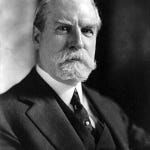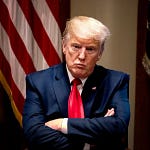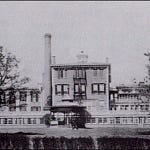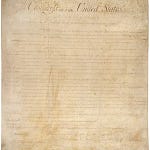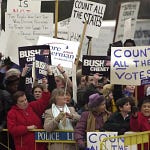On this day in legal history, November 1, 1943, the federal Office of Price Administration implemented rent control in New York City.
This day in legal history marks a crucial transition in the regulatory landscape of New York City's housing market. In 1943, amidst the economic upheavals of World War II, the Federal Office of Price Administration took a decisive step to mitigate the inflationary pressures of a wartime economy by issuing regulations that froze rents in New York City at the levels of March 1, 1943. This action, borne out of the Emergency Price Control Act (EPCA) signed by President Franklin D. Roosevelt in 1942, sought to create a balance in a market where resources were overwhelmingly directed towards the war effort, including housing which was now a scarce yet essential commodity.
The federal initiative on rent control was a precursor to a more localized approach that would follow in the ensuing years. As the war concluded and the Emergency Price Control Act was allowed to expire on June 30, 1947, it paved the way for the Federal Housing and Rent Act of 1947, which commenced on July 1 of the same year. This new legislation maintained controls on pre-1947 buildings while exempting new constructions post February 1, 1947, a demarcation that still plays a significant role in determining the control status of housing accommodations in both New York State and City.
As the federal reins loosened, the State of New York foresaw the need to institute its own set of rent regulations to address the ongoing housing shortage. This foresight led to the establishment of the Temporary State Housing Rent Commission in 1950, tasked with the responsibility of regulating rental housing. The transition from federal to state control was marked by a legislative effort to freeze rents at the level effective on March 1, 1950, giving the commission ample time to devise a comprehensive rent control plan for New York. The legislation of 1951, which closely mirrored the federal regulatory framework, signified the State's commitment to preserving a semblance of stability and fairness in the rental housing market amidst the changing economic tides.
The enactment and evolution of rent control laws were not merely a response to economic conditions but an exemplification of governance adapting to the exigencies of the times. Approximately 2,500,000 rental units came under state control, with about 85% of these units located in New York City, underlining the magnitude of the initiative. The establishment of local rent offices across the State further institutionalized the mechanism of rent regulation, ensuring that the delicate balance between the interests of owners and tenants was judiciously maintained. The saga of rent control from federal to state jurisdiction illuminates the intricacies of legal and economic interplay in shaping the lived experiences of New Yorkers.
The U.S. Supreme Court is set to examine the legality of a trademark application for the phrase "Trump Too Small" made by California attorney Steve Elster, amidst objections from the U.S. Patent and Trademark Office. This case emerges as a notable dispute exploring the boundaries between trademarks and constitutional free-speech rights. The trademark, intended for use on T-shirts, is seen by Elster as a means to critique former President Donald Trump’s governing style, with its roots in a 2016 debate exchange concerning Trump’s hand size. The Patent and Trademark Office initially denied the application, referencing a 1946 law that restricts the use of an individual’s name in a trademark without consent. However, a federal appeals court later supported Elster, positing that constitutional free-speech protections outweighed the cited privacy and publicity rights of public figures in this scenario.
Now, as the matter escalates to the Supreme Court, the justices are to consider the appeals court's reversal and the larger interplay of free-speech rights within trademark law. The Court's decision, anticipated by June's end, follows its recent trend of overturning trademark laws on free-speech grounds, as seen in cases concerning the rock band The Slants and artist Erik Brunetti. The Biden administration argues that the current law differs as it aims to prevent exploitation of names for commercial gain, rather than restricting viewpoint-based speech. They note that while the law doesn’t bar Elster from using the phrase, it considers the trademark as a "condition on a government benefit, not a restriction on speech." On the flip side, Elster contends that such a law could be misused by public figures to suppress criticism, pointing out inconsistencies in trademark approvals for political phrases. The outcome of this case could potentially redefine the intersection of trademark law and free speech, particularly as it pertains to public figures and political discourse.
US Supreme Court to determine legality of 'Trump Too Small' trademark | Reuters
The fraud trial concerning Sam Bankman-Fried, founder of the FTX cryptocurrency exchange, is nearing its conclusion as closing arguments are scheduled to be presented. This follows a year after FTX's bankruptcy which led to a significant financial market shock and wiped out Bankman-Fried’s estimated $26 billion fortune. U.S. prosecutors have charged him with committing a monumental financial fraud, allegedly stealing $8 billion from customers, marking one of the largest financial frauds in U.S. history. Bankman-Fried pleaded not guilty to the charges and even took to the stand in his own defense, facing rigorous cross-examination from prosecutors.
Over the course of the trial, which included 15 days of testimony, key accusations came from three of Bankman-Fried’s former close associates who, after pleading guilty, testified against him. They claimed he directed them to carry out financial crimes, including misappropriating FTX customer deposits and misleading lenders and investors regarding the financial health of FTX and his other venture, Alameda Research. Prosecutors argue that the misappropriated funds were used to settle debts, make speculative investments, and contribute to U.S. political campaigns. They also accuse Bankman-Fried of false advertising to attract customers to FTX, by misrepresenting the safety of their funds and the financial health of the exchange.
In his defense, Bankman-Fried portrayed himself as a busy CEO who delegated operational details to subordinates, admitting to mistakes but denying any fraudulent intent or theft. However, the prosecution sought to challenge this narrative by highlighting discrepancies in his statements regarding the safety of customer funds and the independence of Alameda from FTX. The trial, reflecting high stakes for Bankman-Fried who could face a long prison term if convicted, underscores the ongoing scrutiny and regulatory challenges surrounding the cryptocurrency sector. The case now awaits the closing arguments, and the jury’s deliberation is expected to commence thereafter, marking a significant moment in cryptocurrency legal jurisprudence.
Sam Bankman-Fried's trial on FTX fraud charges heads to closing arguments | Reuters
Donald Trump Jr. is slated to testify in a civil fraud trial in New York against his father, former President Donald Trump, accused of inflating asset values to deceive lenders and insurers. Being an executive vice president at the Trump Organization, Donald Jr. is a co-defendant in the case and will be the first among Trump’s adult children to testify, followed by Eric and Ivanka Trump. The testimony comes amidst Donald Trump's ongoing campaign for the 2024 presidential election, where he appears to be leading among Republican candidates.
The lawsuit, initiated by New York Attorney General Letitia James, alleges that Trump, along with his two adult sons and certain family businesses, inflated their assets by billions to secure favorable loan terms. While Trump denies the allegations, claiming political bias on part of James and the presiding judge, he has also faced fines for violating a limited gag order related to the case.
Furthermore, Trump has encountered other legal hurdles, including four separate criminal prosecutions concerning attempts to overturn his 2020 election defeat. The civil fraud trial also featured testimony from Trump’s former lawyer, Michael Cohen, who claimed Trump directed him to inflate asset values.
The case extends beyond mere allegations, as prior to the trial, a ruling found Trump had fraudulently inflated his net worth, leading to an order for the dissolution of several of his companies, though this ruling is currently on hold pending appeal. The trial now primarily focuses on determining damages, with James seeking at least $250 million in fines, a business operation ban in New York for Trump and his sons, and a five-year commercial real estate ban against Trump and the Trump Organization.
This trial, marked by sharp legal exchanges and significant testimonies, could have substantial financial and legal repercussions for the Trump family, and potentially political implications amidst the upcoming presidential election campaign.
Donald Trump Jr. to testify at father's civil fraud trial | Reuters
The National Conference of Bar Examiners (NCBE) has announced that three states will begin administering a new version of the bar exam starting July 2026, with two additional states committed to adopting the new format in the future. Maryland, Missouri, and Oregon are the pioneering states for the new bar exam, named the Next Gen bar exam, which is set to debut in July 2026. Following them, Wyoming plans to transition to the Next Gen exam in July 2027, while Connecticut has also decided to adopt the new exam, albeit without a specified transition date.
This development is significant as it marks the first major overhaul of the national bar exam in 25 years. The revamped Next Gen exam aims to emphasize legal skills over rote memorization of laws, distinguishing itself from the current exam format which comprises three separate components. The new format will also be shorter, spanning nine hours compared to the current 12-hour test, making it a less daunting endeavor for aspiring legal professionals.
However, the transition has faced resistance from some states; notably, Florida and Pennsylvania have opted not to adopt the Next Gen exam when it becomes available. The hesitancy or outright rejection from such states, which have a high number of bar examinees, hints at the challenges faced by the NCBE in advocating for a uniform transition to the new exam format.
The NCBE had initially intended to cease offering the current Uniform Bar Exam in July 2027, effectively providing a one-year window for states to decide between the two exams. However, on October 25, the NCBE amended this decision, extending the availability of both exams through February 2028 to allow states more time for transition. Additionally, the NCBE plans to reintroduce family law to the list of subjects tested on the Next Gen exam from July 2028 onwards.
The new model is lauded by officials like Oregon State Bar President Lee Ann Donaldson, who believes it will ensure new attorneys are "practice-ready" upon joining the bar. This transition comes amidst the ongoing efforts by the NCBE to educate individual states about the benefits of the updated exam, underscoring the importance of preparing the next generation of attorneys for practical legal challenges.








